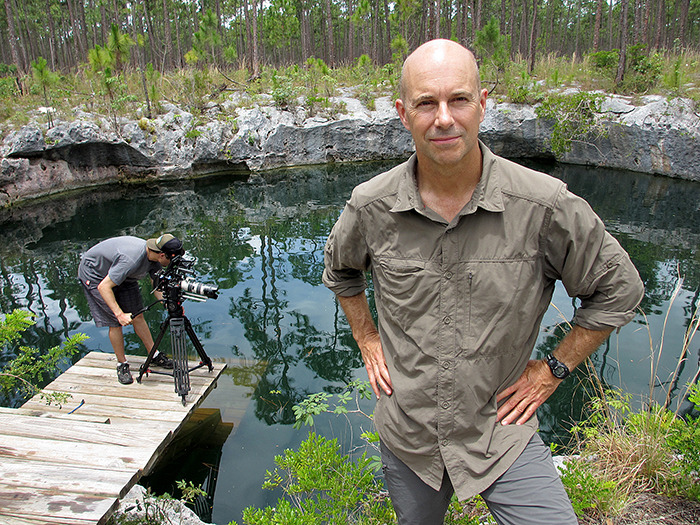As mentioned, I selected implosion cams for our first 3D documentary – six (three pairs) of Canon Vixia HF 10s and 12 (six pairs) of Canon Vixia HF M31s – a little while back.
Next, we needed to figure out how to turn each pair on simultaneously (the duos will be positioned to capture the implosion of a condemned sports stadium in Brazil for the explosive demolition series Blowdown).
And how to turn them on without knocking one (or both) out of alignment.
The cameras need to sit at a 74 mm interaxial distance, right next to each other, for us to capture the footage we need.
This means they’ll be positioned too close together for use to easily access the viewfinder on the right camera, where the camera controls are.
Since each camera comes with a remote, we tried to use them to adjust the settings on each one (holding two, trying to point each one at the infrared sensor on its respective camera), but it’s cumbersome and awkward.
It’s a problem: we need four elements to be in sync between before we start recording for these shots to work: the two cameras have to have the same zoom, the same white balance, the same exposure, and the same focus.
The risk of losing one or more implosion shots – our big bang footage that climaxes the show – because the crew’s running around like mad, trying to calibrate and turn these 18 cameras on properly while preserving their alignment, is a risk I’m not willing to take.
So our stereographer Sean White discovered a work-around – a home-made infrared transmission system that allows us to control both cameras at the same time.
With sourced components off the Internet, a box has been built that will receive any infrared signal and transmit it through a split cable to two infrared sensors.
Here’s how it will work in the field:
The crew will position the box close to the first pair of cameras, positioned on a side-by-side slider rig at the 74 mm interaxial distance I mentioned earlier.
They’ll attach the ends of the split cable to the infrared sensors on two Canon Vixias, then use a single remote to white balance, zoom, set the exposure and focus both cameras identically (the remote will send a signal to the box, the box will relay the signal to the cameras).
Finally, they’ll use the same system to start the cameras recording simultaneously, remove the spilt cable from the two infrared sensors, and move the box over to the next pair.
Lather, rinse, repeat.
The payoff: 9 sets of cameras, synced, ready to capture the Blowdown in stereo.

